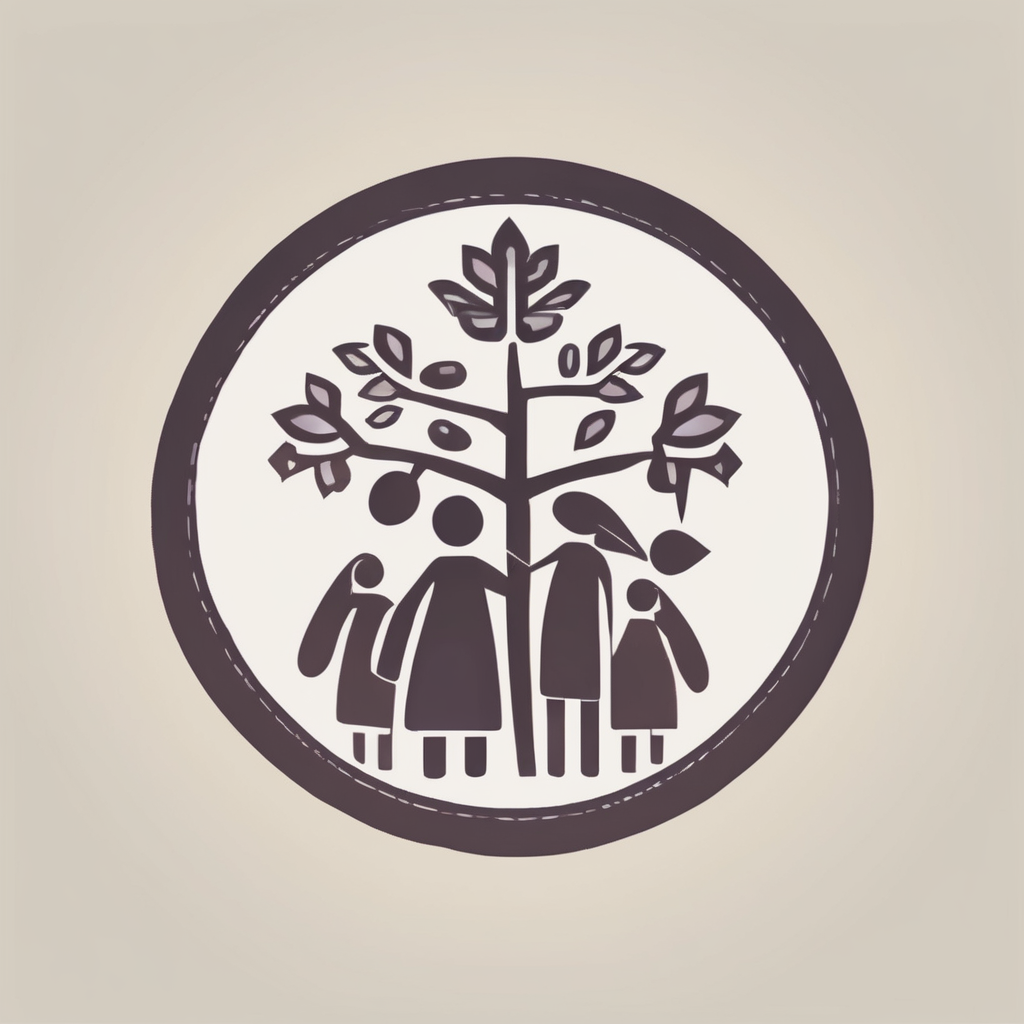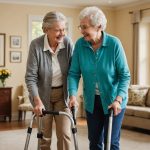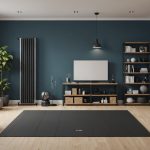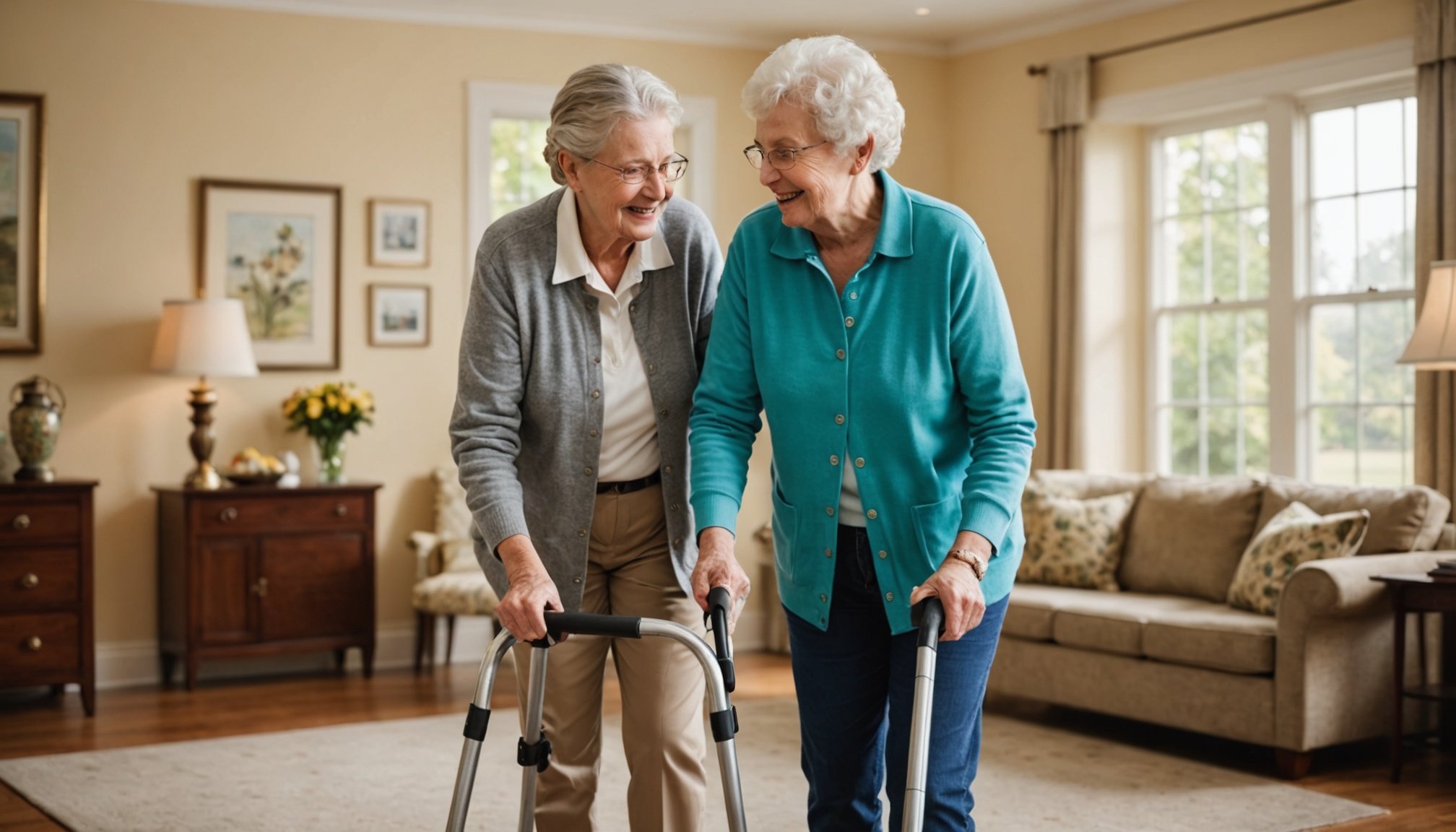Designing a Safe and Fall-Resistant Living Space for Seniors: Top Strategies
As we age, our living spaces can become potential hazards if not properly adapted. For seniors, creating a safe and fall-resistant living environment is crucial for maintaining independence, health, and quality of life. Here are some top strategies to help seniors and their loved ones design a safe and comfortable home.
Understanding the Risks of Falls
Falls are a significant concern for older adults, with approximately 1 in 4 people over the age of 65 experiencing a fall each year. These falls can lead to severe injuries, hospitalizations, and even a loss of independence.
Additional reading : Building Bonds: Tips for Seniors to Strengthen Social Ties via Local Community Programs
“To prevent falls, it’s essential to understand the common scenarios where they occur,” says a healthcare professional. “Bathrooms, staircases, and areas with tripping hazards are particularly risky. Addressing these areas through awareness, education, and practical solutions can significantly enhance senior safety.”
Home Modifications for Safety
Home modifications are a cornerstone of fall prevention. Here are some key areas to focus on:
Also to see : Empowering Seniors 85+: Unlocking the Benefits of Smartphones for Daily Living Enhancement
Accessibility Upgrades
Accessibility upgrades can make a significant difference in the safety and independence of seniors. Here are a few essential modifications:
- Ramps and Stairlifts: Installing ramps or stairlifts can help seniors navigate different levels of the house without the risk of climbing stairs. This is especially important for those with mobility issues.
- Handrails: Handrails along porches, stairways, and even in the bathroom can provide stability and support. Ensure that handrails are securely installed and meet the Americans with Disabilities Act (ADA) standards.
Bathroom Modifications
The bathroom is one of the most hazardous areas in the home for seniors. Here are some modifications to consider:
- Walk-in Tubs and Showers: Installing walk-in tubs or showers with non-slip surfaces can reduce the risk of falls. Grab bars and raised toilets also enhance safety and accessibility.
- Non-Slip Mats and Rugs: Placing non-slip mats or rugs in the bathroom can prevent slipping and falling. Ensure that these mats are securely fastened to the floor.
Kitchen Adaptations
The kitchen is another area that requires modifications to ensure safety and ease of use:
- Lowered Countertops and Easy-to-Reach Appliances: Lowering countertops and using easy-to-reach appliances can make cooking and meal preparation safer and more accessible for seniors.
- Roll-Under Counters and Pull-Out Shelves: These modifications can help reduce reaching and stooping, which can lead to falls.
Exercise and Physical Activity
Regular exercise is a critical component of fall prevention. Here are some effective strategies:
Balance Improvement Exercises
Balance improvement exercises can be easily integrated into daily routines and have shown significant effectiveness in reducing fall rates. Here are a few examples:
- Standing with Feet Apart or Together: This exercise helps improve lower body balance.
- Standing on One Foot: Practicing this with support can increase stability.
- Closing Eyes While Standing: This adds a challenge and enhances proprioception (the ability to sense the position and movement of one’s body).
| Type of Exercise | Purpose | Example |
|---|---|---|
| Strength Training | Increases muscle strength | Weight lifting, resistance bands |
| Balance Training | Improves stability | Tai Chi, standing on one leg |
| Endurance Activities | Enhances overall health | Walking, swimming |
Multifactorial Interventions
Multifactorial interventions (MFI) are comprehensive programs that address multiple risk factors simultaneously. These programs include physical activity, medication management, and home safety assessments. MFI has been shown to be highly effective in reducing falls among older adults.
Home Safety Assessments
Conducting thorough home safety assessments is vital for identifying and rectifying hazardous conditions. Here are some key components to consider:
Standardized Assessments
Using standardized assessment tools like the Morse Fall Scale or STRATIFY can help healthcare professionals evaluate risks and implement appropriate prevention measures. These tools assess various factors, including medical history, physical abilities, and home environment hazards.
Individualized Care Planning
Once risk factors are identified, individualized care planning should follow. This involves creating specific action plans tailored to each patient’s unique needs and circumstances. Integrating these plans into an active, continually updated care strategy ensures that preventive measures are relevant and effective.
Lighting and Clutter Management
Adequate lighting and clutter management are often overlooked but are crucial for preventing falls.
Proper Lighting
Ensuring adequate lighting throughout the home, including stairways and hallways, can improve visibility and reduce tripping hazards. Here are some tips:
- Install Brighter Light Bulbs: Use high-wattage bulbs in areas that are frequently used.
- Use Night Lights: Night lights can help seniors navigate through dark spaces, especially in the bathroom and hallways.
Clutter Removal
Removing clutter and obstacles can significantly reduce the risk of falls. Here are some steps to take:
- Clear Walkways: Arrange furniture to maintain clear walkways, allowing for easy movement.
- Remove Tripping Hazards: Remove loose rugs, electrical cords, and other items that could cause tripping.
Medical Alert Systems
Medical alert systems can provide an extra layer of security for seniors, especially in the event of a fall.
Fall Detection Devices
Devices like Medical Guardian and Bay Alarm Medical offer advanced fall detection features. These devices can automatically contact a monitoring center in the event of a fall, ensuring prompt help is available.
- Range and Connectivity: These devices often have a wide range and can connect via landline, AT&T, or Verizon cellular networks.
- Battery Life: Many devices have a battery life of up to five days, ensuring continuous protection.
Practical Tips for Seniors and Caregivers
Here are some practical tips to help seniors and their caregivers create a safe and fall-resistant living space:
Regular Home Evaluations
Regularly evaluate the home environment to identify and address potential hazards. This includes checking for loose rugs, uneven flooring, and poor lighting.
Use of Assistive Devices
Encourage the use of assistive devices such as canes, walkers, and bath seats to enhance stability and prevent falls.
Open Communication
Encourage open communication between seniors and their healthcare providers about falls. This can help identify risk factors and implement preventive measures early on.
Creating a safe and fall-resistant living space for seniors is a multifaceted task that requires careful consideration of various factors. By implementing home modifications, engaging in regular exercise, conducting thorough safety assessments, and using medical alert systems, seniors can significantly reduce their risk of falls and maintain their independence and quality of life.
As one caregiver noted, “The key to preventing falls is to be proactive. By making these simple yet effective modifications and encouraging regular exercise, we can help our loved ones live safely and comfortably in their own homes.”
By following these strategies, you can help ensure that your home or the home of your loved one is a safe and welcoming space that supports health, independence, and a high quality of life.











